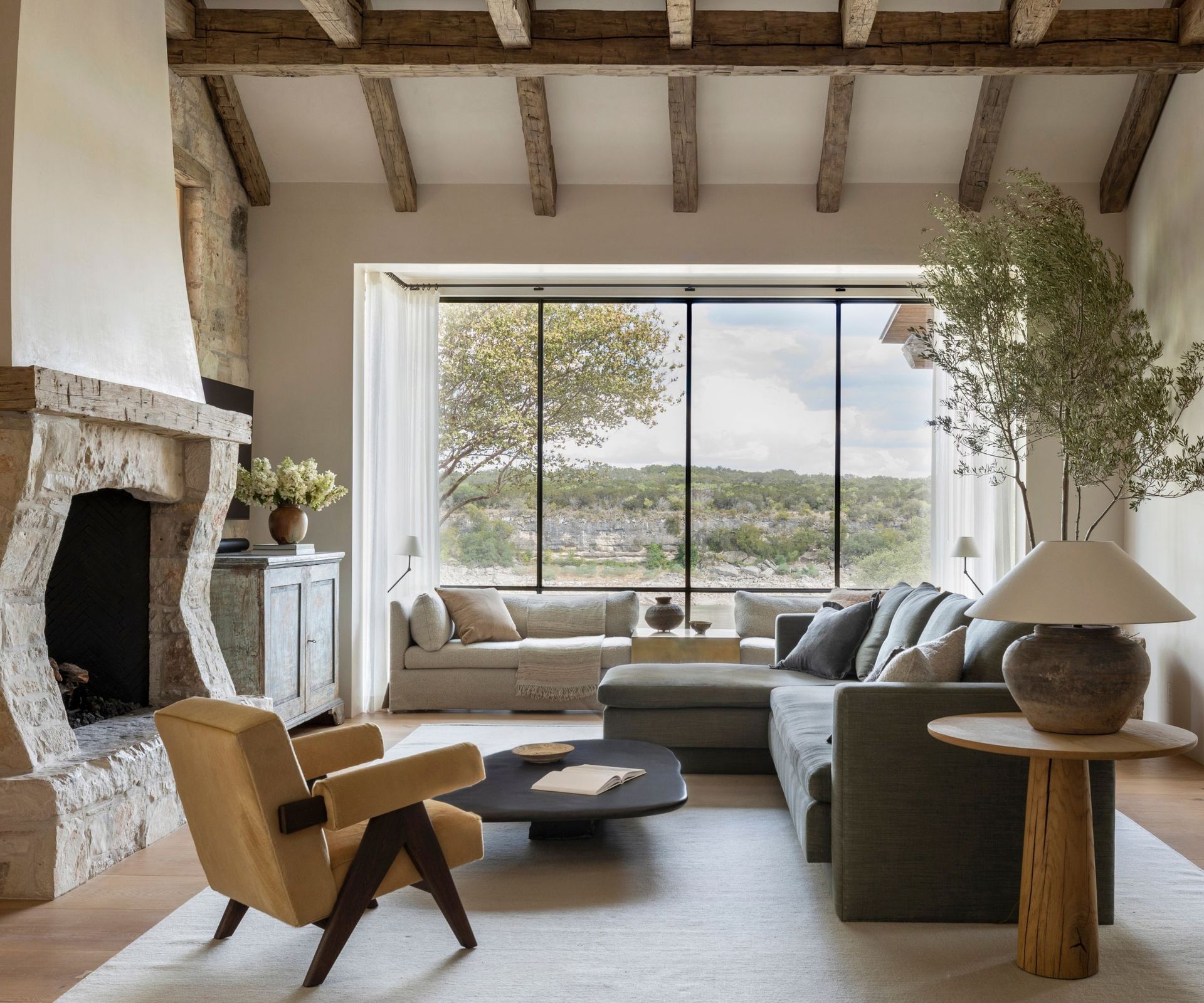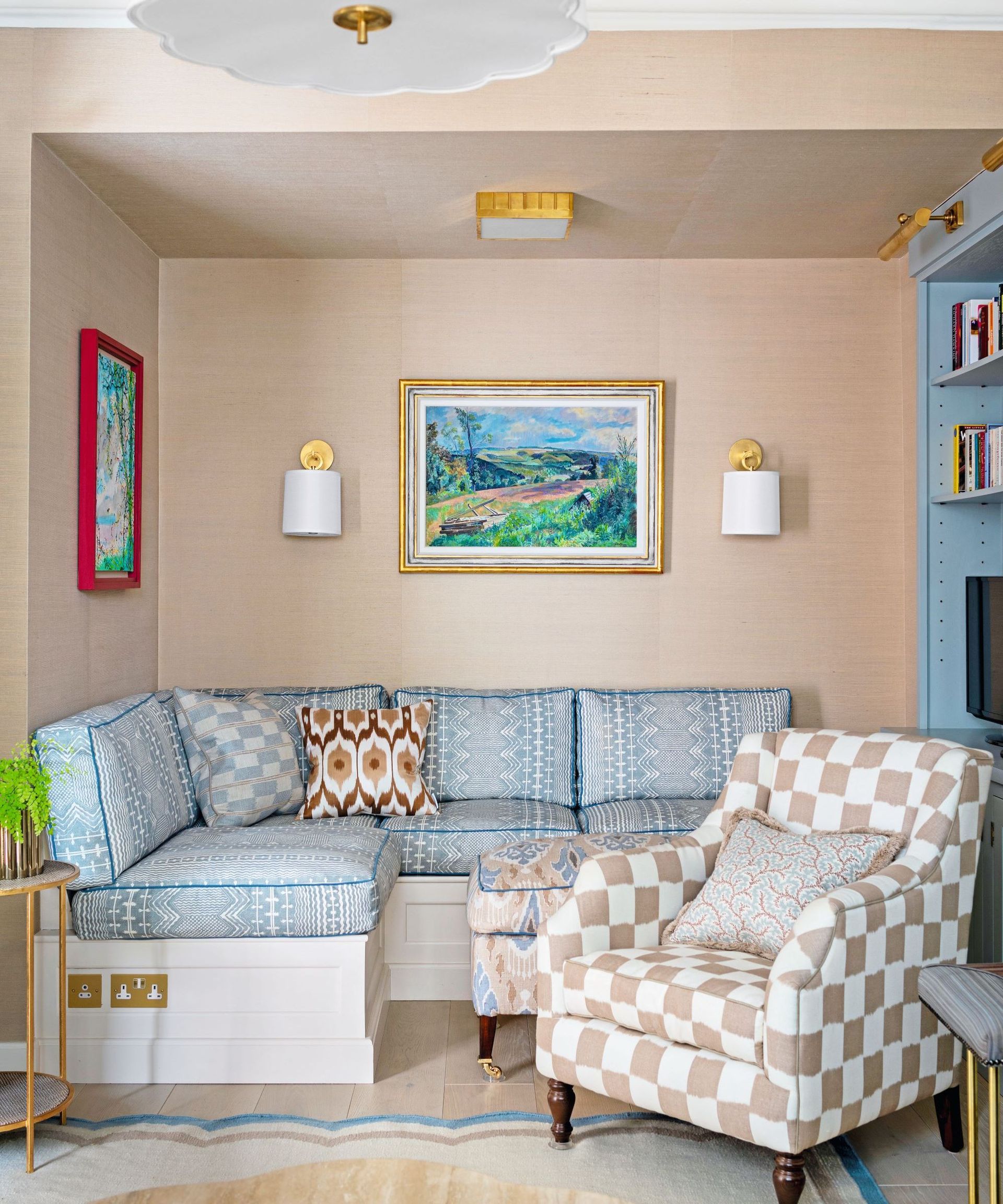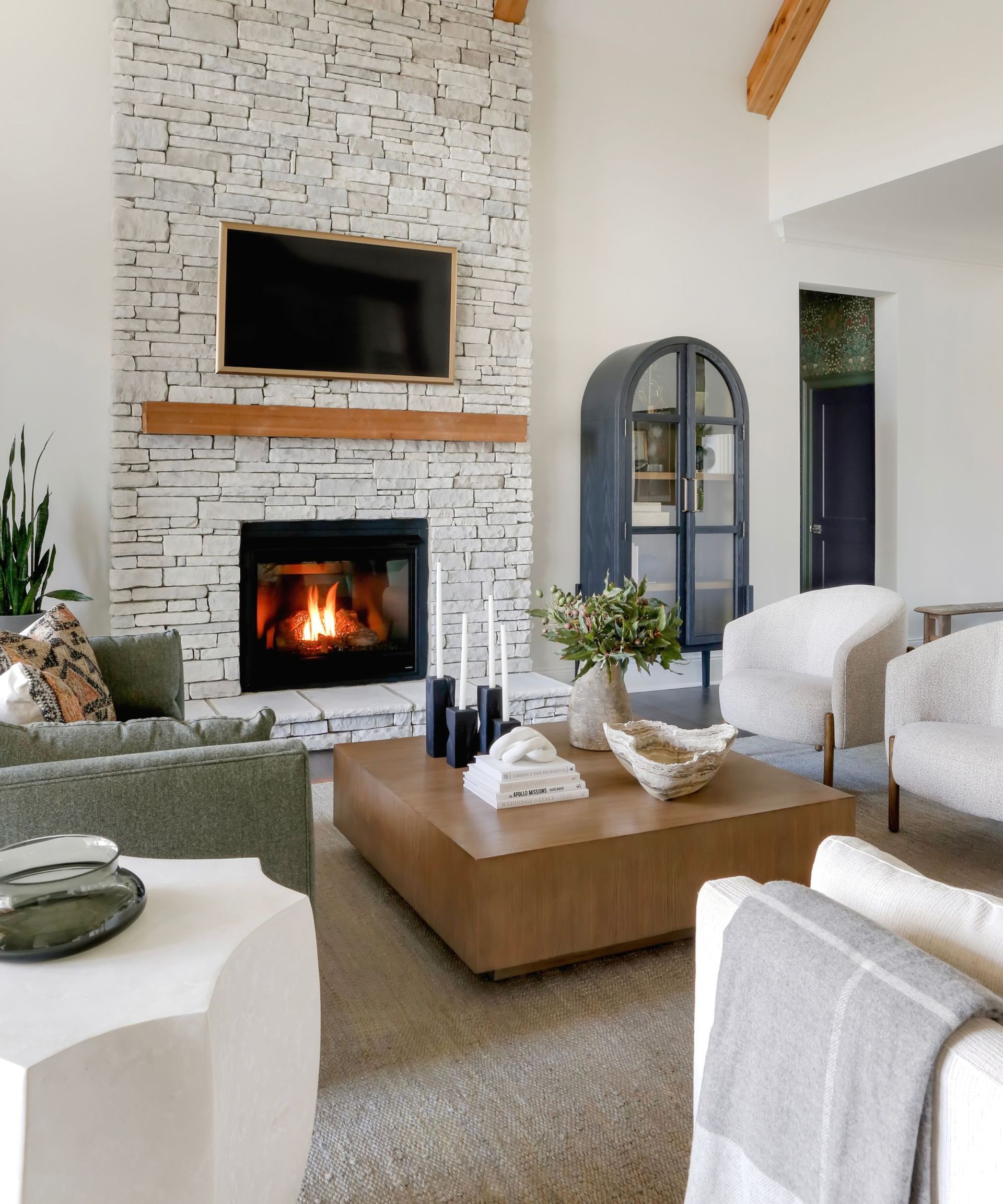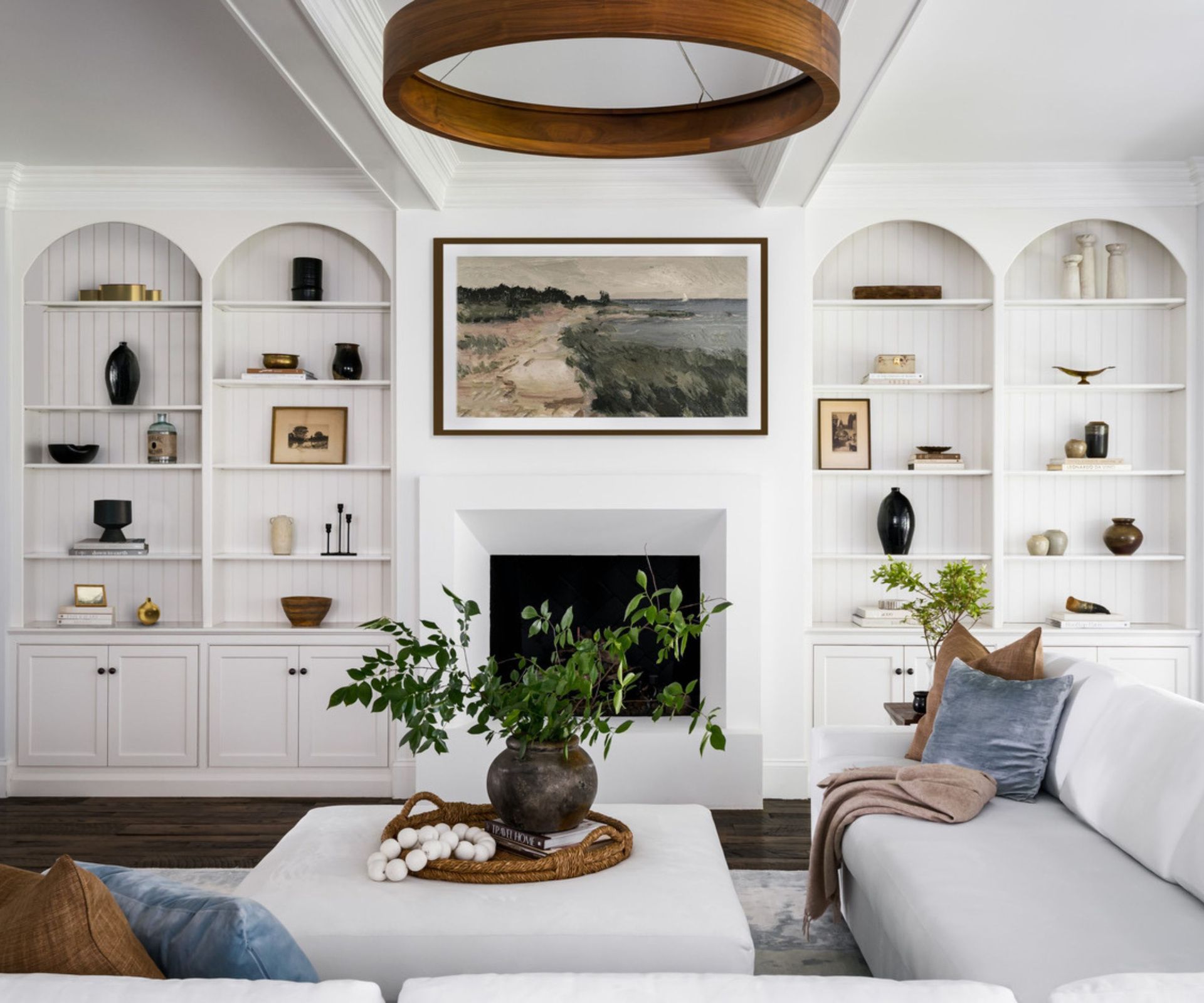Our homes are our sanctuaries to unwind and rest, so making sure you create a living room space that feels relaxing is so important. Nowadays, our homes have become multifunctional – rooms have transitioned to open plan layouts and are used for entertaining, dining, and socializing, while for others, our homes are doubling up as work offices.
With so much going on in our homes, the living room should be the one room that you can retreat to at the end of a busy day. But how do you make your space feel relaxing when it’s surrounded by your day-to-day chaos?
We’ve asked that very question to interior designers to find out how they make a living room more relaxing, so you can combine comfort, tranquillity, and style in one space.
How to make a living room more relaxing
There are so many components that come into play when creating a relaxing living room. Although the look and style of your space is always important, there are extra details to think about to imbue a sense of calm and serenity.
‘When it comes to creating a relaxing living room, you need to think about all of your senses to create a truly cozy space. There are several ways to create a relaxing space, and they all require tapping into our senses,’ explains Sheena Murphy, founder of Nune.
‘Some people will find a space relaxing because of its scent, or color palette, others will respond to the art in a room or the bodily sensation they get when physically interacting with tactile materials,’ she adds.
Whether you’re most concerned with color palette or want to tap into every component of creating a relaxing home, these tips and ideas from designers will help you create the perfect living room to unwind.
1. Decorate with relaxing paint colors
(Image credit: Marie Flanigan Interiors/Julie Soefer)
In any space, the paint color chosen can really dictate the mood of the room. Brighter hues are invigorating, making them perfect for busier spaces like a kitchen or home gym, whereas shades of blue encourage concentration, ideal for a home office. But when creating a relaxing living room, look to more calming, soothing palettes.
‘With a little careful planning, it’s not difficult to create a peaceful haven in your living room,’ says Danielle Beeken, co-founder and creative director at KINDLY. ‘Start by choosing a calming color palette, such as soothing neutrals or muted pastels,’ she recommends.
For a more focused color palette, take inspiration from nature – gardens are associated with serenity and wellness, so introducing hues inspired by your outdoor space is a great way to make your living room more relaxing.
‘To infuse your living room with a serene ambiance, opt for a nature-inspired color palette featuring soft greens, warm browns, and other earthy neutrals,’ advises Marie Flanigan, principal at Marie Flanigan Interiors. ‘For additional accents and pops of color, I love using muted jewel tones that typically complement this softer palette,’ she adds.

Marie Flanigan is an award-winning interior designer whose passion and achievements in design have positioned her as one of the nation’s best. She is classically trained and practiced architect, and her trademark style is evident through the sophisticated use of color, texture, and light. Every home she designs receives her personal signature of timeless elegance and innovative simplicity.
2. Choose comfortable furniture
(Image credit: KINDLY)
This might seem like an obvious point, but all too often people choose a sofa based on style, color or size, and how comfortable the sofa is to relax on falls lower down the list of priorities. As important as the aesthetic of the sofa is to your living room’s overall appearance, you should never compromise on comfort.
‘The best way to ensure that your living room feels relaxing is to choose a super-comfy sofa,’ says Kathy Kuo, CEO at Kathy Kuo Home. ‘These days, there are so many sofas out there that are as comfortable as they are beautiful, so there’s no reason you shouldn’t have a sofa that you always want to be curled up on with a good book!’
It’s not just the sofa itself, but the soft furnishings you add to it to bring extra comfort, too. ‘Once you have your perfect sofa, I love adding plush decorative pillows and cozy throw blankets to make it a true haven,’ Kathy recommends. ‘Add a scented candle that you love to your coffee table, along with a stack of great books and chic coaster for your beverage of choice and you have all the makings of a serenely relaxing evening!’

Kathy Kuo is a celebrated interior designer and international guru within the home and lifestyle space. She has 20+ years of experience in the design industry.
3. Create a zone dedicated to relaxing
(Image credit: Henry Prideaux)
If your living room is the social hub of your home, you might be wondering how to balance the different aesthetics that come with the different uses of the space. The best way to confront the task is to create zones that are tailored to the different ways you use the room.
‘The living room can easily become the one room in your home where everyone meets and socializes at the same time, hence is easy to become a room full of objects that everyone brings in,’ explains Cinzia Moretti, Creative Director at Moretti Interior Design. ‘One thing to remember is that this room needs to be relaxing for a few people at once so that is important to take into consideration when making this room a space where you relax.’
The only way to ensure that you create a cohesive space that actually works for your relaxation time is to think about how you like to unwind. ‘The first thing to consider is tailoring to your choice of relaxing activity, whether that’s reading, listening to music, or meditating. Try to divide your room into zones, especially if your living room is part of an open plan,’ recommends Cinzia.
If it’s important that the space remains multifunctional, split the space to cater to each necessity and create a nook dedicated to relaxing. ‘Create a little corner for the activity that makes you relax. You can easily do that by putting a barrier between you and distractions, such as a folding screen, or using plants to block out unwanted views. Introduce, a main seating area, along with another plush corner. This will ensure that during large socials, you can break up into smaller groups and have intimate chats,’ she adds.
4. Introduce cozy textures
(Image credit: Kathy Kuo Home)
When creating a relaxing living room, think about all the furniture and soft furnishings that create a cohesive space. When the right pieces are paired together, you can create a real escape to relax and get cozy in.
‘There are many ways to induce relaxation in an interior. When thinking specifically about living rooms, it’s a bit of a dance because comfort has to be balanced with practicality to an extent it doesn’t necessarily when thinking about kitchens or bedrooms,’ says Sheena Murphy.
‘We typically pair plush rugs, cozy, larger scale sofas (depending on the room size), and soft materials sprinkled throughout. Introduce adjustable living room lighting with harder surfaces that have warm, rich tones (think bronze, oak, walnut + stone) to ensure a visually inviting and physically luxurious space which also functions well for entertaining (think hard surfaces for objects, drinks + snacks), TV viewing, storage and just hanging out,’ she adds.
It’s important to remember that a relaxing living room isn’t just about creating a cozy living room it is, but also the ease of use. Having a balance of practical elements with the softness of textures are what truly creates a relaxing room.
5. Accessorize with throw pillows and blankets
(Image credit: Marie Flanigan Interiors/Julie Soefer)
There are few better ways to create a relaxing living room than with the addition of cozy throw pillows and blankets. When choosing the pieces you want to accessorize with, consider the fabrics they are made from – you want thick, cozy blankets and cushions that are actually comfortable to lay against.
‘Consider the texture of upholstered furnishings or throw cushions. Fuzzy, textured, or silky fabrics create a luxe sensory experience that can help ground us and encourage relaxation,’ says Sarah Barnard, of Sarah Barnard Design, a design studio focused on creating interiors with wellbeing in mind.
It’s not just about the textures of the soft furnishings, but the decorative pieces you display around the living room are just as important. ‘Incorporate various textures such as velvet, linen, leather and natural wood accents to add depth and tactile interest to the space,’ advises Marie Flanigan. ‘Further, embracing time-worn elements and patina through décor pieces is a great way to make the room feel welcoming and lived in.’
6. Add ambience with mood lighting
(Image credit: Future)
The atmosphere of every space is heavily influenced by lighting, and the living room is no exception. ‘Most people focus on living room colors or furniture, but I don’t think many people understand the power of lighting. Something as simple as making sure your lightbulbs aren’t blindingly bright can make a huge difference in your mood and the overall vibe of a space,’ says Kristin Harrison, interior designer and owner of Bungalow 10 Interiors.
‘One of the biggest tricks to creating a warm, welcoming and relaxing environment, is to create layers of light. Try mixing ambient, task and accent lighting throughout the living room – I always recommend 2700K bulbs for a warm glow. It’s one of the most cost-effective ways to enhance your living area,’ she adds.
The best way to introduce mood lighting is through additional light sources. ‘Create ambient lighting at night using table and floor lamps and don’t restrict any natural light from windows in the day,’ recommends Danielle Beeken.
Opt for a table lamp with a warmer-toned bulb to create a warmer glow. This ambiance will help to create that cozier feel to your living room, rather than having harsh overhead lighting. ‘Choosing the right color temperature is really important as the light intensity can affect our human mood and behaviour,’ explains Cinzia Moretti, adding ‘light creates more than just visual effects, it also has biological and psychological effects that can impact your health and wellbeing.’
7. Include house plants into your living room decor
(Image credit: Bungalow 10 Interiors)
With so much emphasis of taking inspiration from nature to make a living room more relaxing, it seems fitting to add actual plants into your space. Not only do they look great, but different plants have different properties – certain species, such as a snake plant, are known to remove toxins and pollutants from the air, ideal for a relaxing living room.
‘Including plenty of plants and greenery in our living rooms can create a nurturing environment that encourages well-being by bringing nature within the home, and experiencing the joy of watching plants grow,’ adds Sarah Barnard.
If having indoor plants isn’t realistic, consider bringing in plants through other elements, such as wallpaper and decor. ‘Incorporating biophilic design through a natural color palette or fabric and wallpaper patterns inspired by nature helps to encourage mindfulness and relaxation within a space,’ says Sarah.
For a more subtle addition, consider the smaller decorative items you have in your living room. Danielle Beeken recommends adding art depicting nature and plants into your space. These pieces will naturally lean into a more relaxing color palette and allow you to have more fun and creative freedom in your decorating.
Making your living room more relaxing is all about tapping into your senses. Think about adding cozy additions like throw pillows and blankets to curl up in, consider a color scheme that feels calming, and choose furniture that is actually comfortable as well as aesthetic.
It might seem like quite a task to make your living room a more calming oasis, but once you break down the different components, it’s easier than you might think. Figure out what’s most important to you when it comes to relaxing – a tailored space that works for your way of unwinding will make all the difference.












